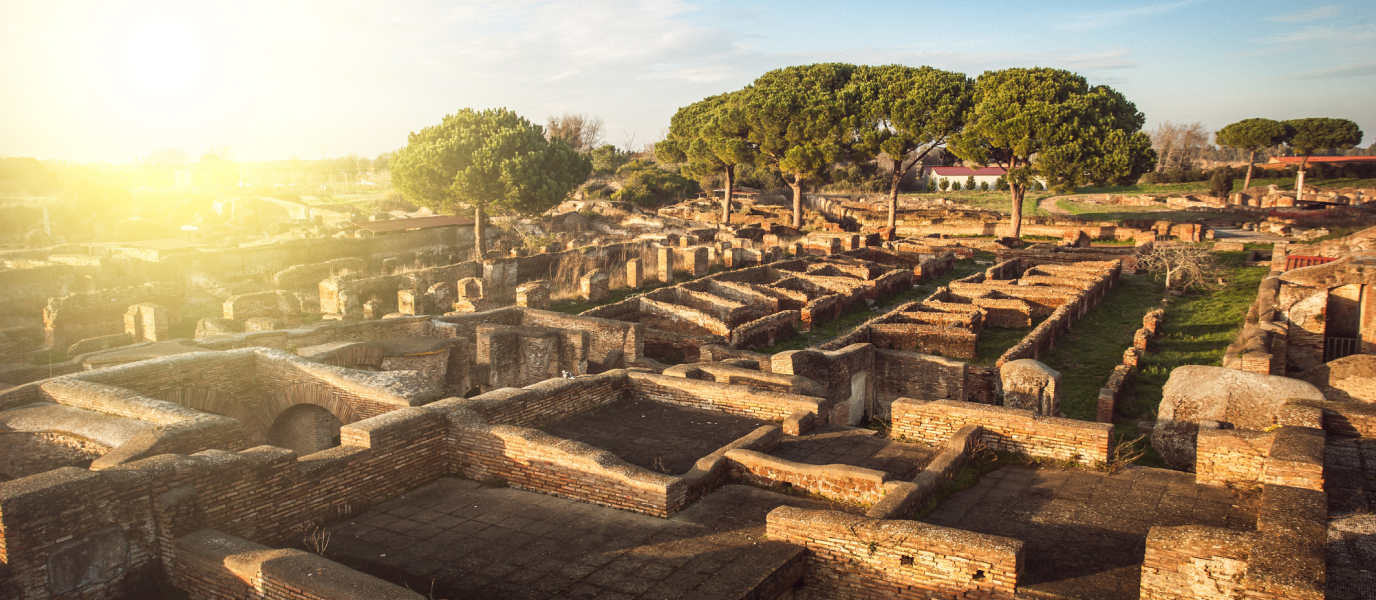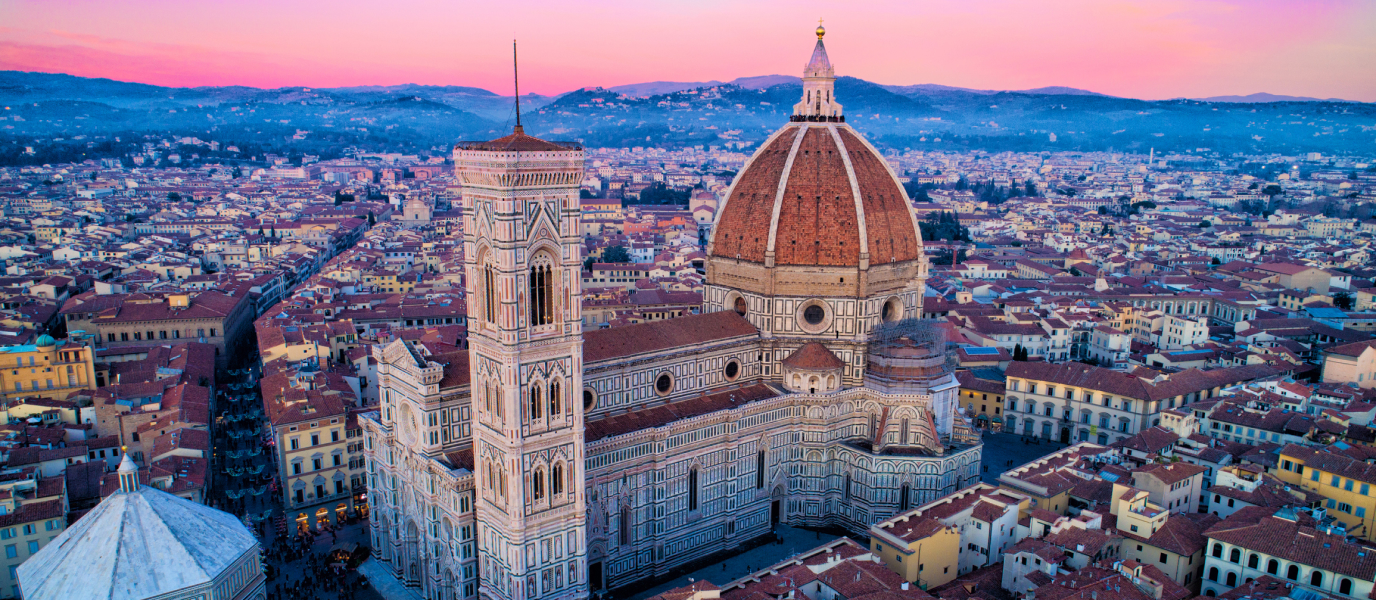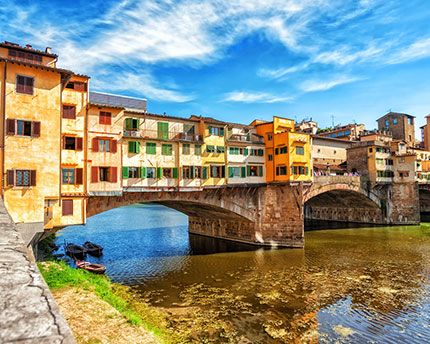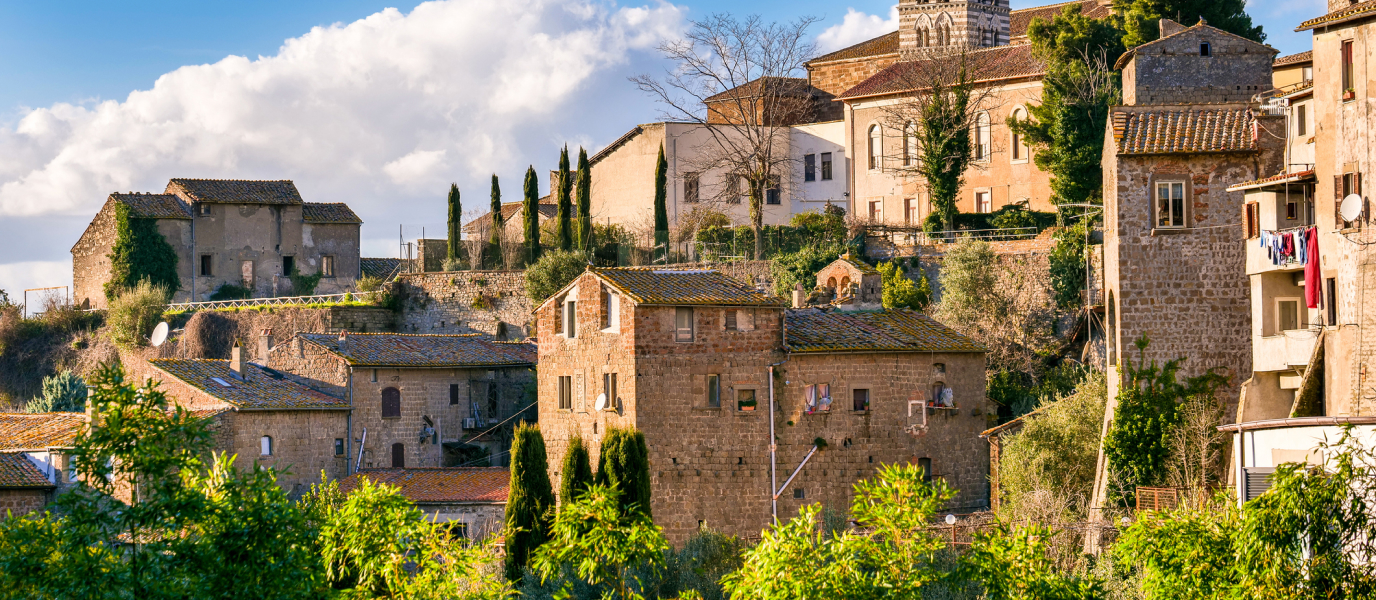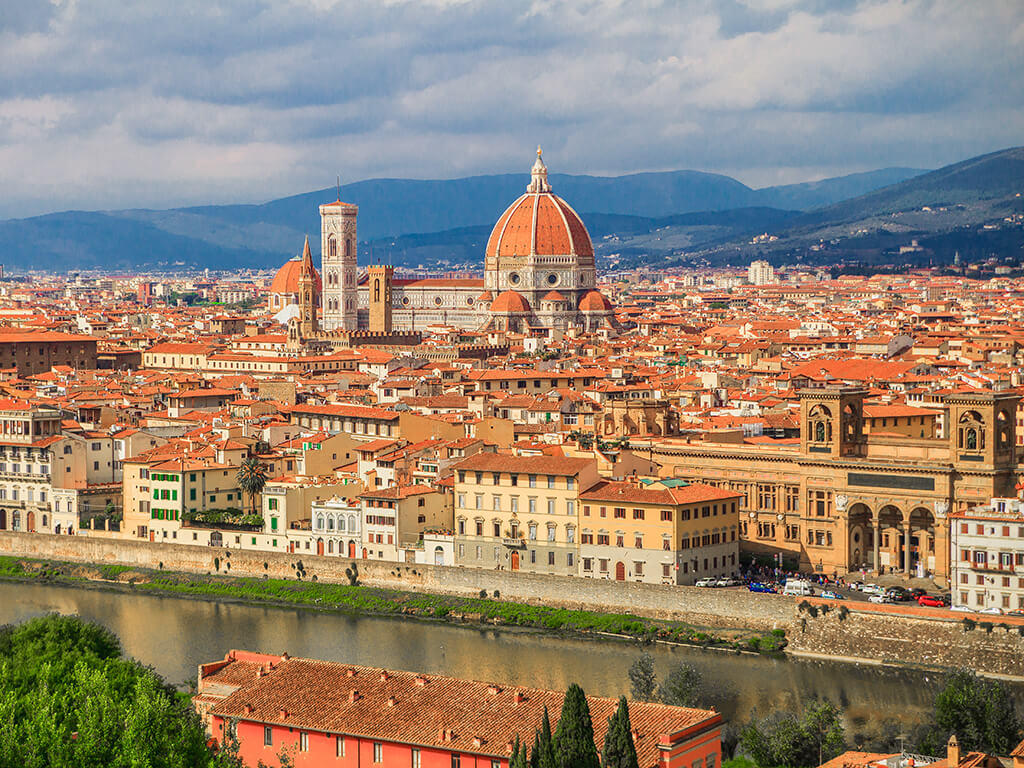The almighty capital of the Roman Empire could not be without a port – it was imperative it be connected to the rest of the empire – so the construction of Ostia, the ancient port of Rome, was undertaken roughly 30 km from Rome.
The origins of the port of Rome
During the Empire, Imperial Rome was a thriving city with more than a million inhabitants. There weren’t enough local natural resources to meet the demands of the population, so they needed to import goods from faraway provinces and territories.
The original port of Ostia was not, however, deep enough for large vessels. Goods had to be unloaded at sea from the larger vessels to the smaller vessels, which would then travel up the Tiber River to Rome. A revamp was needed, and Ostia underwent a radical transformation in less than a hundred years, transforming from a small river port into an important commercial port. Two additional ports were also added: the first was commissioned by the Roman Emperor Claudius to enable large vessels to dock.
Nevertheless, the new port of Ostia was still at the mercy of violent storms so, the Roman Emperor Trajan adapted it, and also built a large hexagonal harbour further inland. Connected to the Tiber River by way of a canal, this harbour is known today as Trajan’s Lake and is located right by Rome’s Fiumicino Airport.
The archaeological site of Ostia Antica
The booming economy of Ostia changed the town into a flourishing commercial town just on the outskirts of Rome. The city was eventually abandoned following the decline of the Roman Empire and being ravaged by several plagues. The sands buried the city for several centuries until excavation work began, revealing well-preserved public buildings. This discovery helped understand the importance Ostia Antica during the golden years of the Roman Empire.
Ostia Antica is not the original town of Ostia. Ostia (the port) was located on the coast while Ostia Antica was two kilometres upriver.
The archaeological site of Ostia Antica can be easily reached from Rome by train.
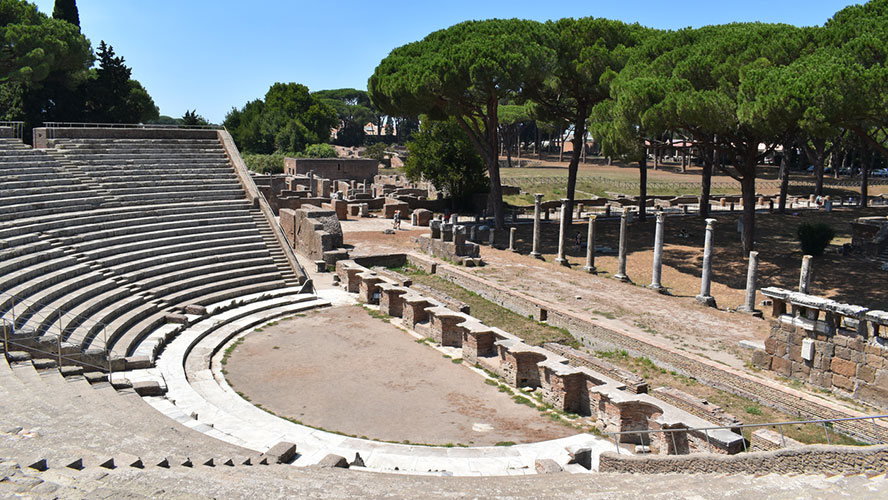
Upon arrival, visitors are greeted with the ruins of Porta Roman, the main gate of Ostia. The masonry is an incredible testament of the city’s wealth when it was at its peak. The foundations of the necropolis and several buildings, that most certainly housed businesses and shops, can be seen on either side of the gate.
Decumanus Maximus: the main gate of Ostia
The path from Porta Romana runs up to what was once the main street that crossed the town, Decumanus Maximus. It was the most affluent street of Ostia. The ruins of the Baths of Neptune and the incredible amphitheatre – it could hold more than 2,000 spectators – line this ancient street.
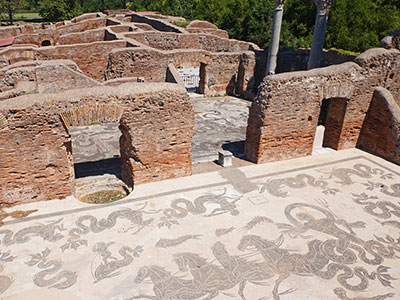
The 1-km long Decumanus Maximus is a journey to Roman times. The ruins are of ancient homes, shops and the Piazzale delle Corporazioni, the main hub of commerce and trade in the Roman Empire.
Decumanus Maximus leads to the Forum, the Capitolium, the baths, the market and other Ostia public buildings. Perfectly conserved stairs run up the ruins of the monumental Capitolium. The political, commercial and religious centre of the city was based right in these buildings. What makes this site so impressive is how well preseved many of the buildings are.
Behind the Forum lies what would have been Via della Foce, which led to the river, when the Tiber River flowed here. There are several ruins of baths, temples and domus – individual houses for the wealthy families. The Domus di Amore e Psiche is one of the most stunning ruins of Ostia Antica with the incredible columns, mosaics, and of course, the statue of Cupid and Psyche.
Before heading back to Rome, take a walk around the edge of the archaeological grounds to discover the other gates to the city: Porta Laurentina and Porta Marina. You can also walk along the Tiber River that runs just to the north of the site.
Museo Di Ostia Antica
Once you’ve visited the site, head to the museum to explore the numerous archaeological treasures found during the excavations, including a statue of Minerva that adorned Porta Romana and a statue of Perseus holding the head of Medusa from Porta Laurentina. There is also a sculptural group of Cupid and Psyche, and several sarcophagi from the necropolis, decorated with different mythological symbols, on display.
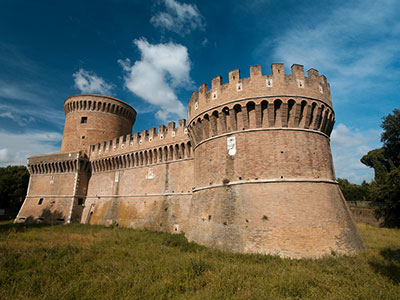
The museum is situated on the archaeological site, right behind the ruins of the Capitolium by the Tiber River. There is one last interesting landmark – the Castle of Julius II. It was built in 1483 and it is an extraordinary example of Renaissance military architecture. The castle is located by the main site access gate.
A visit to Ostia is one of the best excursions to take from Rome and is undoubtedly one of the best destinations in the surrounding area. A walk around the archaeological site of Ostia Antica is like visiting a mini Rome. The size of this port city substantiates the importance it had during the Roman Empire. If you are looking to get away from Rome for a day, Ostia is the perfect destination.




































































